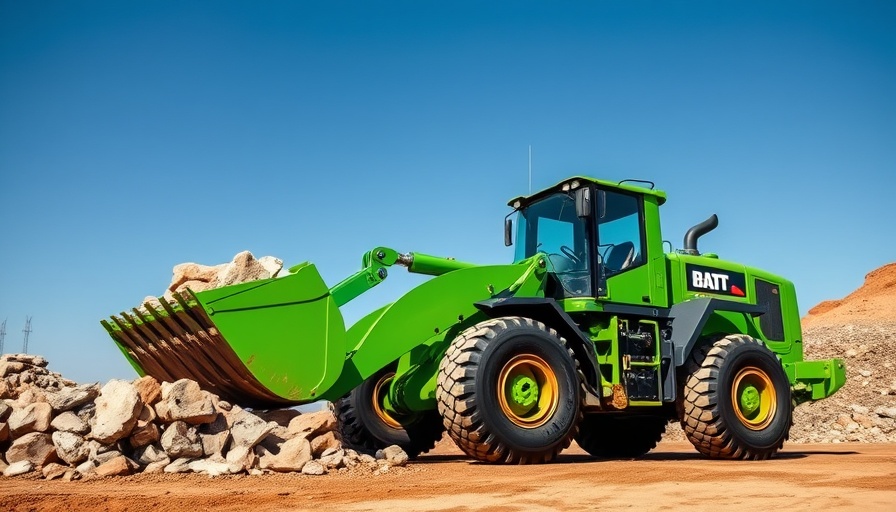
Revolutionizing Small Scale Construction: The Trend of Articulated Loaders
Small articulated loaders (SALs) are experiencing a transformation in the construction equipment landscape as they gain popularity in the U.S., following their success in Europe. These versatile machines, often labeled as subcompact wheel loaders, deliver substantial benefits, making them an appealing option for a diverse range of projects.
Key Specifications and New Releases
The SALs are defined as machines that weigh less than 6,000 pounds and are equipped with less than 75 horsepower, emphasizing their suitability for various tasks due to their compactness and mobility. A representative example includes Avant Tecno's new model, the 855i, featuring an impressive dump height of 11 feet 5.8 inches and a lift capacity of 4,190 pounds. Such specifications allow for efficient handling of heavy loads in tight spaces, making them ideal for contractors operating in urban environments.
The Versatility of Small Articulated Loaders
One of the standout features of SALs is their low center of gravity, which significantly enhances load stability. This makes them safer for lifting and transporting materials, while their tight turning radius and excellent visibility to attachments ensure operators can navigate Job sites effectively. Additionally, many models come equipped with telescopic booms, enabling higher lifts and more practical applications, such as truck loading, enhancing their functionality further.
Comparison with Other Equipment: Where Do Small Articulated Loaders Stand?
Manufacturers position SALs as strong alternatives to skid steers and paving the way as an entry-level compact loader, appealing to homeowners and small contractors looking to stretch their capabilities without jumping to larger machines. As this category expands, SALs are increasingly becoming competitive with bigger machines, suggesting a trend towards larger, more capable models that can handle more demanding tasks.
Feature Spotlight: Notable Manufacturers and Their Offerings
In the current market, several manufacturers are stepping up their game in the SAL segment. Brands like Bobcat, Case, and Wacker Neuson are among those making significant contributions with their innovative models, which not only meet varying needs but also address the growing demand among contractors looking for powerful yet compact solutions. For instance, Bobcat has launched new models that improve efficiency and functionality for small and medium-sized construction sites.
The Future of Small Articulated Loaders
As the demand for compact machinery grows in the U.S., the future looks promising for SALs. There is a clear shift towards integrating advanced technologies, including smart features that enhance operation efficiency and safety. Innovations could lead to machines equipped with ignition interlocks, improved visibility systems, and even automation capabilities, further making them attractive to a new generation of contractors determined to optimize their operations.
Final Thoughts: Are Small Articulated Loaders Right for You?
Understanding the applications and advantages of small articulated loaders can empower contractors and DIY enthusiasts alike to make informed purchasing decisions. These machines not only offer flexibility and stability but also open new avenues for handling projects efficiently, all while fitting comfortably within tight spaces. Whether you’re managing residential renovations or large-scale commercial jobs, SALs are worthy of consideration for your equipment lineup.
 Add Row
Add Row  Add
Add 




Write A Comment